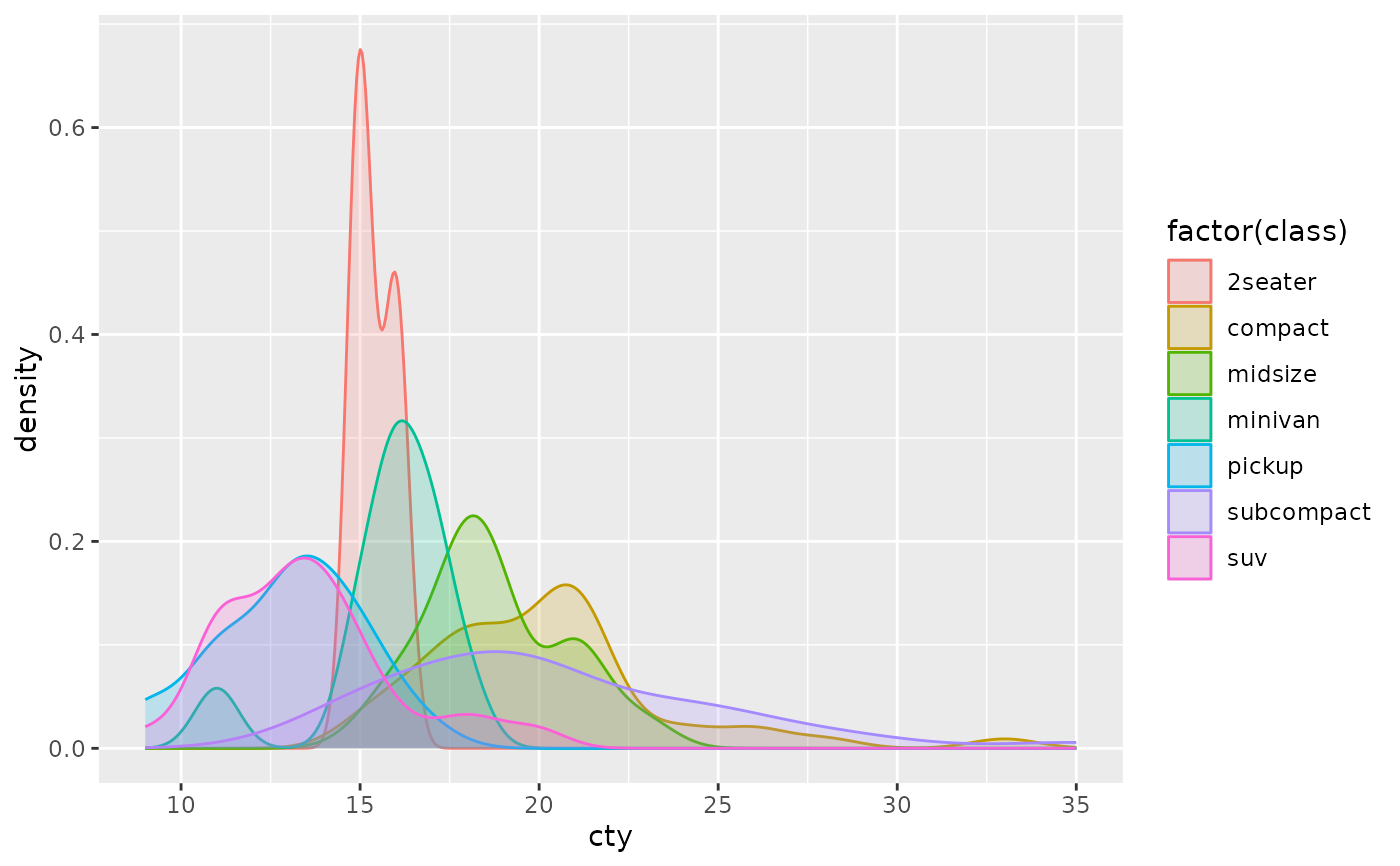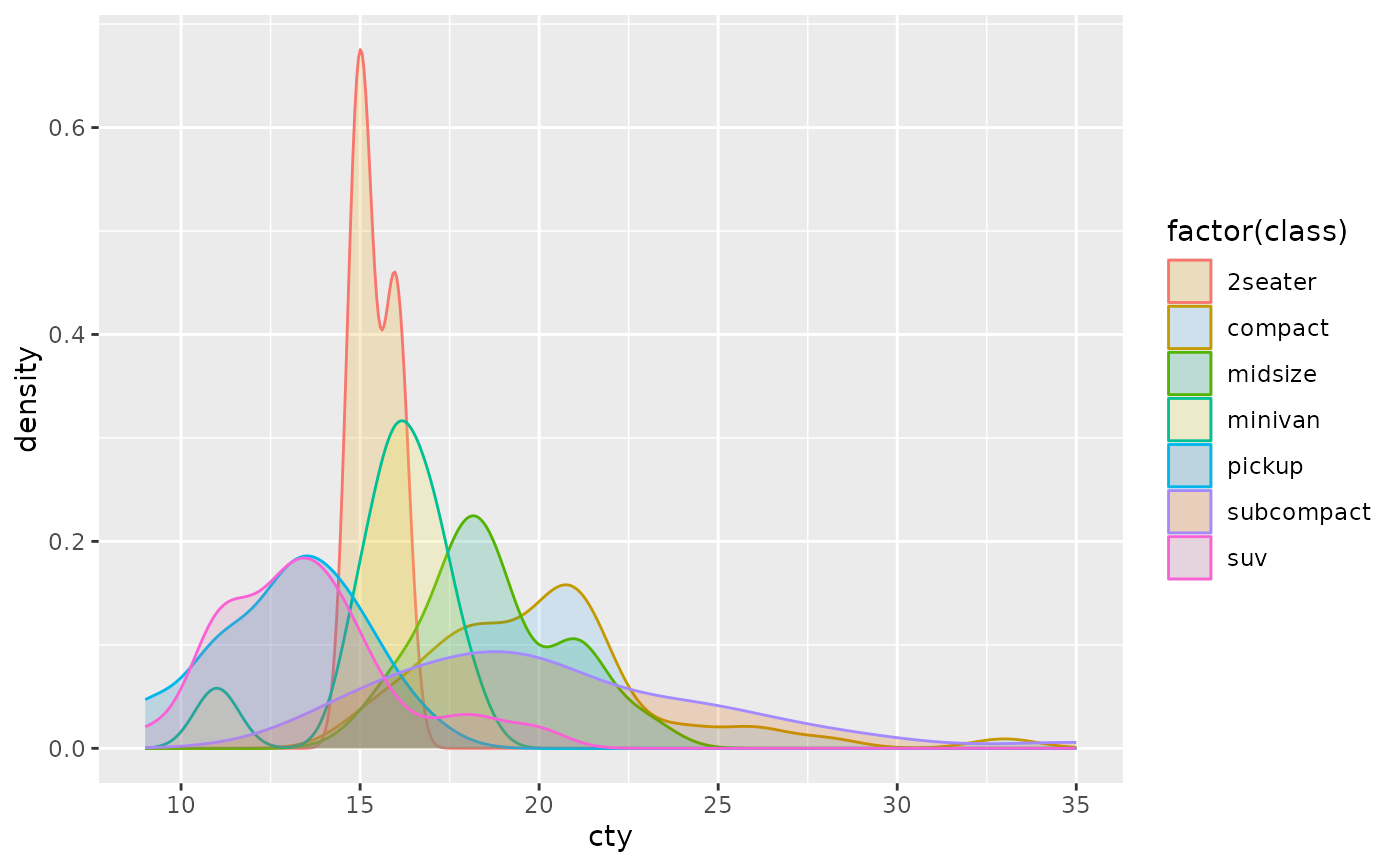The default discrete colour scale.
Arguments
- ...
Arguments passed on to
discrete_scalebreaksOne of:
limitsOne of:
NULLto use the default scale valuesA character vector that defines possible values of the scale and their order
A function that accepts the existing (automatic) values and returns new ones. Also accepts rlang lambda function notation.
dropShould unused factor levels be omitted from the scale? The default,
TRUE, uses the levels that appear in the data;FALSEincludes the levels in the factor. Please note that to display every level in a legend, the layer should useshow.legend = TRUE.na.translateUnlike continuous scales, discrete scales can easily show missing values, and do so by default. If you want to remove missing values from a discrete scale, specify
na.translate = FALSE.nameThe name of the scale. Used as the axis or legend title. If
waiver(), the default, the name of the scale is taken from the first mapping used for that aesthetic. IfNULL, the legend title will be omitted.labelsOne of the options below. Please note that when
labelsis a vector, it is highly recommended to also set thebreaksargument as a vector to protect against unintended mismatches.NULLfor no labelswaiver()for the default labels computed by the transformation objectA character vector giving labels (must be same length as
breaks)An expression vector (must be the same length as breaks). See ?plotmath for details.
A function that takes the breaks as input and returns labels as output. Also accepts rlang lambda function notation.
guideA function used to create a guide or its name. See
guides()for more information.callThe
callused to construct the scale for reporting messages.superThe super class to use for the constructed scale
- palette
One of the following:
NULLfor the default palette stored in the theme.a character vector of colours.
a single string naming a palette.
a palette function that when called with a single integer argument (the number of levels in the scale) returns the values that they should take.
- aesthetics
The names of the aesthetics that this scale works with.
- na.value
If
na.translate = TRUE, what aesthetic value should the missing values be displayed as? Does not apply to position scales whereNAis always placed at the far right.- type
The preferred mechanism for setting the default palette is by using the theme. For example:
theme(palette.colour.discrete = "Okabe-Ito").
See also
The discrete colour scales section of the online ggplot2 book.
Other colour scales:
scale_alpha(),
scale_colour_brewer(),
scale_colour_continuous(),
scale_colour_gradient(),
scale_colour_grey(),
scale_colour_hue(),
scale_colour_identity(),
scale_colour_manual(),
scale_colour_steps(),
scale_colour_viridis_d()
Examples
# A standard plot
p <- ggplot(mpg, aes(displ, hwy, colour = class)) +
geom_point()
# You can use the scale to give a palette directly
p + scale_colour_discrete(palette = scales::pal_brewer(palette = "Dark2"))
 # The default colours are encoded into the theme
p + theme(palette.colour.discrete = scales::pal_grey())
# The default colours are encoded into the theme
p + theme(palette.colour.discrete = scales::pal_grey())
 # You can globally set default colour palette via the theme
old <- update_theme(palette.colour.discrete = scales::pal_viridis())
# Plot now shows new global default
p
# You can globally set default colour palette via the theme
old <- update_theme(palette.colour.discrete = scales::pal_viridis())
# Plot now shows new global default
p
 # Restoring the previous theme
theme_set(old)
# Restoring the previous theme
theme_set(old)
